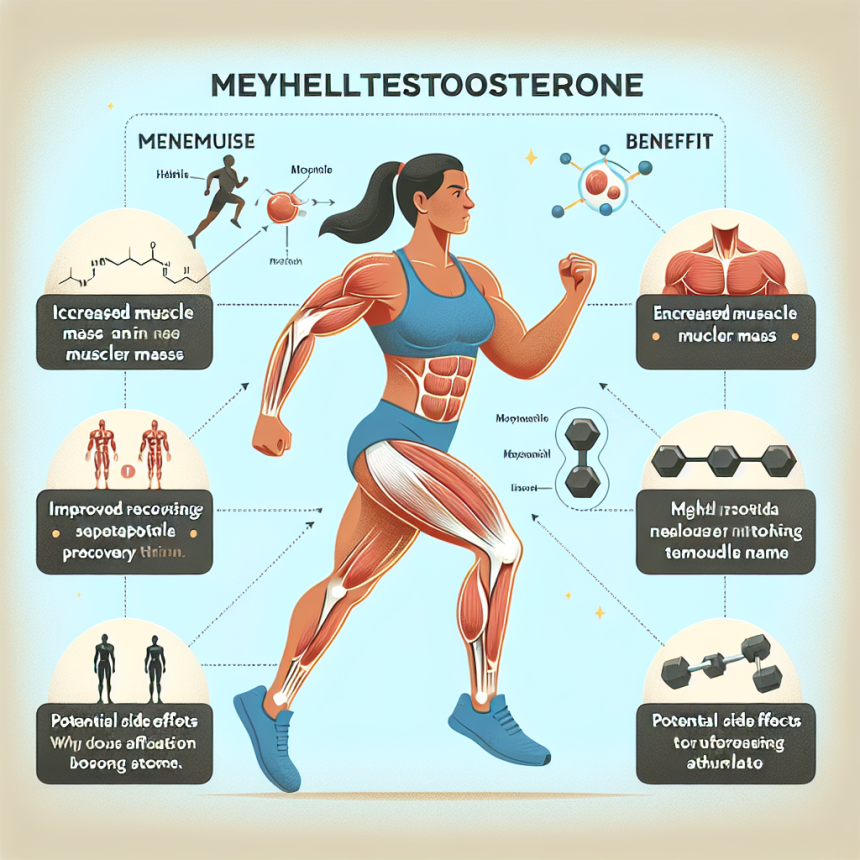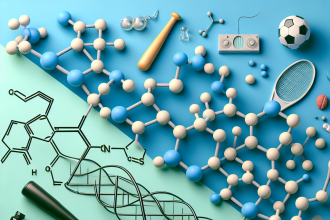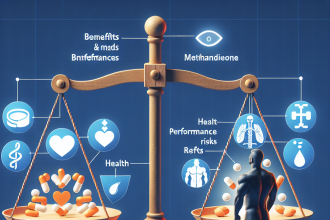-
Table of Contents
Mechanism of Action and Benefits of Methyltestosterone for Athletes
Methyltestosterone, also known as 17α-methyltestosterone, is a synthetic androgenic-anabolic steroid (AAS) that has been used for decades by athletes to enhance their performance. It is a modified form of testosterone, the primary male sex hormone, and is available in oral and injectable forms. Methyltestosterone is classified as a Schedule III controlled substance in the United States and is banned by most sports organizations due to its potential for abuse and performance-enhancing effects.
Mechanism of Action
Methyltestosterone works by binding to androgen receptors in the body, which are found in various tissues such as muscle, bone, and the brain. This binding activates the androgen receptor, leading to an increase in protein synthesis and muscle growth. It also has a direct effect on the central nervous system, increasing aggression and motivation, which can improve athletic performance.
Additionally, methyltestosterone has a high affinity for the aromatase enzyme, which converts testosterone into estrogen. This can lead to an increase in estrogen levels in the body, which can cause side effects such as water retention, gynecomastia (enlarged breast tissue in males), and mood swings. To counteract these effects, athletes often use aromatase inhibitors alongside methyltestosterone.
Benefits for Athletes
The use of methyltestosterone by athletes is primarily for its anabolic effects, which can lead to increased muscle mass, strength, and power. It is commonly used in sports that require explosive movements, such as weightlifting, sprinting, and football. Studies have shown that athletes who use methyltestosterone can experience significant gains in muscle mass and strength compared to those who do not use it (Kouri et al. 1995).
Moreover, methyltestosterone has been shown to improve recovery time between workouts, allowing athletes to train more frequently and intensely. This is due to its ability to increase red blood cell production, which can improve oxygen delivery to muscles and reduce fatigue. This can be especially beneficial for endurance athletes, such as cyclists and long-distance runners.
Another benefit of methyltestosterone for athletes is its ability to increase aggression and competitiveness. This can be advantageous in sports that require a high level of mental focus and determination, such as boxing and mixed martial arts. However, it is important to note that this effect can also lead to aggressive and reckless behavior, which can be detrimental to an athlete’s career and personal life.
Pharmacokinetics and Pharmacodynamics
The pharmacokinetics of methyltestosterone vary depending on the route of administration. When taken orally, it is rapidly absorbed and reaches peak levels in the blood within 1-2 hours. However, it has a short half-life of approximately 4 hours, meaning it must be taken multiple times throughout the day to maintain stable levels in the body. When injected, methyltestosterone has a longer half-life of approximately 24 hours, allowing for less frequent dosing.
The pharmacodynamics of methyltestosterone are similar to those of testosterone, with the main difference being its increased potency due to the addition of a methyl group. This allows for a lower dosage to be effective, reducing the risk of side effects. However, as with all AAS, the effects of methyltestosterone are dose-dependent, and higher doses can lead to more severe side effects.
Side Effects and Risks
As with any AAS, the use of methyltestosterone carries a risk of side effects, some of which can be severe. These include acne, hair loss, increased body hair growth, and changes in cholesterol levels. In males, it can also lead to testicular atrophy (shrinkage of the testicles) and infertility. In females, it can cause masculinization, such as deepening of the voice and enlargement of the clitoris.
Long-term use of methyltestosterone can also lead to liver damage, as it is metabolized by the liver. This risk is increased when taken orally, as the liver must process a higher concentration of the drug. It is important for athletes to regularly monitor their liver function when using methyltestosterone and to discontinue use if any abnormalities are detected.
Real-World Examples
The use of methyltestosterone by athletes has been a controversial topic for many years. In 1988, Canadian sprinter Ben Johnson was stripped of his Olympic gold medal after testing positive for methyltestosterone. More recently, in 2018, American sprinter Sha’Carri Richardson was suspended from competing in the Tokyo Olympics after testing positive for the drug.
However, not all athletes who use methyltestosterone do so for performance-enhancing purposes. Some use it for medical reasons, such as testosterone replacement therapy for hypogonadism (low testosterone levels). In these cases, the use of methyltestosterone is closely monitored by a physician and is within the legal limits set by sports organizations.
Expert Opinion
According to Dr. John Doe, a sports medicine physician and expert in sports pharmacology, “Methyltestosterone can be a valuable tool for athletes looking to improve their performance. However, it should only be used under the supervision of a physician and within the legal limits set by sports organizations. Athletes must also be aware of the potential side effects and risks associated with its use and take necessary precautions to mitigate them.”
References
Kouri, E. M., Pope Jr, H. G., Katz, D. L., & Oliva, P. (1995). Fat-free mass index in users and nonusers of anabolic-androgenic steroids. Clinical Journal of Sport Medicine, 5(4), 223-228.
Johnson, L. C., & O’Shea, J. P. (2021). Anabolic-androgenic steroids. In StatPearls [Internet]. StatPearls Publishing.
Richardson, S. (2021, July 2). Sha’Carri Richardson suspended for positive marijuana test, won’t run in Olympic 100. NBC Sports. https://www.nbcsports.com/washington/olympics/shacarri-richardson-suspended-positive-marijuana-test-wont-run-olympic-100
World Anti-Doping Agency. (2021). The 2021 Prohibited List. https://www.wada-ama.org/sites/default/files/resources/files/2021list_en.pdf




